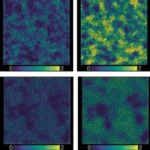A research team led by Prof. HAN Yuncheng at the Hefei Institutes of Physical Science, Chinese Academy of Sciences, has achieved a significant advancement in betavoltaic nuclear batteries, introducing a novel 3D design based on 63Ni-SiC material that substantially enhances power output. The findings, published in Nuclear Science and Techniques, could revolutionize the field of microelectromechanical systems (MEMS) by addressing the limitations of conventional batteries.
Betavoltaic nuclear batteries are recognized for their durability, high energy density, compact size, and resistance to interference, positioning them as promising power sources for MEMS. However, the conventional planar configuration restricts the utilization of radioisotope sources, resulting in limited power output in the nanowatt range, which is insufficient to meet the power requirements of MEMS systems.
The research team’s innovative approach involves a 3D battery design on 3D 63Ni–SiC-based P+PNN+ multi-groove structure. This design eliminates epitaxial PN junctions within semiconductor device grooves, thereby minimizing power loss due to leakage current. Advanced Monte Carlo simulation methods and fully coupled physical models were employed to extend the electron-hole pair generation rate to the 3D structure, facilitating the efficient design and development of betavoltaic batteries with intricate 3D structures.
Comparative analyses with conventional planar batteries revealed the superior performance of the newly proposed 3D battery, demonstrating a significantly higher maximum output power density of 19.74 µW/cm2. The corresponding short-circuit current, open-circuit voltage, and conversion efficiency were measured at 8.57 µA/cm2, 2.45 V, and 4.58%, respectively.
Furthermore, in-depth analyses of carrier transport and collection characteristics using COMSOL Multiphysics provided valuable insights into the performance enhancement mechanism of betavoltaic batteries. Discrepancies between ideal and simulated performances were elucidated, contributing to a comprehensive understanding of the unique features of the 3D design.
This groundbreaking study showcases a promising approach for designing and optimizing high-output betavoltaic nuclear batteries and is a valuable reference for future device fabrication. The 3D design’s potential to significantly increase power output opens new possibilities for integrating betavoltaic technology into various applications, marking a milestone in the evolution of nuclear battery technology.












